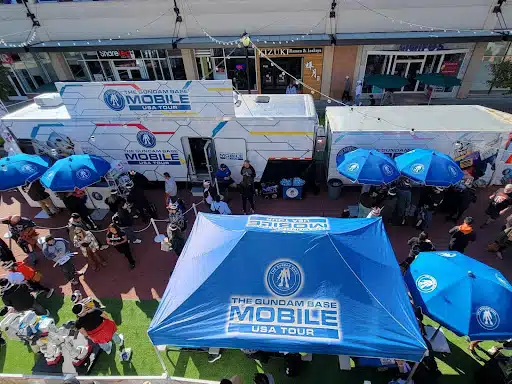We are seeing quality brand activism a lot these days and that is a really good thing! Bringing your brand to life and showing the world it cares is just good brand marketing. Cause marketing provides an opportunity to forge an emotional connection with your customers by sharing a meaningful mission with them. Corporate social responsibility (CSR) is, in layman’s terms, the act of incorporating social and environmental concerns into a business. CSR programs center around the idea that businesses can help make the world a better place. CSR programs are common nowadays, with 85% of S&P 500 companies reporting efforts related to CSR in 2017. And it’s no wonder that the approach is popular — 91% of Millennials report that brands with a cause are more appealing to them.
CSR can apply to a variety of different corporate activities, including direct donations to nonprofits, commitments to diversity in the workforce, and a focus on sustainability and reducing environmental impact. While all of these efforts are praiseworthy, they may not translate to more attention and loyalty from consumers. Why is that? These efforts don’t actively involve your customers because they are not customer-facing! So, how can you connect with your audience and promote a good cause at the same time? The answer is another form of CSR: consumer activism.
How to Spark Activism
Consider the following two examples:
- You are waiting in a long line at the grocery store. You get to the point of checking out. As you swipe your credit card, text on the card reader asks if you would like to donate $1 to prevent childhood hunger. Tired of being asked to donate to every cause imaginable, by impulse you immediately select “No” to finish the checkout process. For a moment you feel bad about not giving a simple dollar, but these interactions are so commonplace that it is soon forgotten.
- You are at a pet store, having picked out multiple fun and enriching treats and toys for your beloved pet. As you are waiting in line, you hear the checkout person ask the customer 3 spots ahead of you in line whether they would like to spend $1 to help save the life of a shelter animal. They say yes, and so do the other customers in front of you. When it is your turn to check out, you are asked the same question. Hearing that everyone ahead of you had said yes, and being an animal lover yourself, you happily part with your $1. After all, what is an extra $1 on top of what you already spend to show your love for animals?
The differences between the two examples are subtle. Both interactions involve an ask for a charitable contribution at the point of checkout. Both are asking for the same small amount of money. But the second example is successful due to the extra touches: A personal ask to contribute, rather than a passive screen. And, the peer influence of hearing others having said “yes” to the ask. The second approach is far more effective than the first.
All You Have To Do Is Ask!
Well, all you have to do is ask the right way. As seen in the above examples, successful asks include a few key components:
- A person-to-person, face-to-face interaction
- Social pressure
- A clear connection between the values of the customer and the charitable contribution
Do these concepts look familiar? If you’re a regular reader of our blog, they should — they’re the same successful techniques used in experiential marketing! Incorporating active, interpersonal interactions with customers into your CSR program is much more likely to guarantee a connection with your customers. In turn, customers who feel a connection with your brand’s mission and values are likely to show brand loyalty and even become brand fanatics.
The pet store example above is actually the real-life practice of PetSmart pet stores. PetSmart has success with consumer activism because they aren’t just passively promoting a social mission — they empower shoppers to adopt the cause as their own. PetSmart has particular success by using person-to-person interaction. Psychology shows that people are more likely to agree to something when speaking face-to-face. According to a 2017 study*, individuals were more likely to complete a survey when asked in person rather than over email. In fact, asking 6 people in person was just as effective as emailing 200 people!
Clearly, the key to a successful consumer activism approach is to be active rather than passive. Think about how your brand can actively involve customers in a cause that is related to your values and mission. Invite your customers to make a difference alongside you. Here’s an example of a hugely successful award-winning program we activated for Disney Parks.
Give a Day, Get a Disney Day was a promotion created with The Walt Disney Company to increase attendance at its theme parks and promote volunteerism across North America. The company partnered with American charitable and non-profit organizations to provide volunteer opportunities; individuals who volunteered with associated charities and non-profits received a voucher good for one free admission to a Walt Disney World Resort or Disneyland Resort theme park. We had 1 million volunteers sign up for 8 hours as a great corporate social responsibility initiative – in only 63 days!
Pro Motion is here to help you create a campaign that ignites passion for your customers. Call us today at 636-577-8507.

Can’t wait for our next post? Learn More About Steve Randazzo’s Best Selling book, Brand Experiences: Building Connections in a Digitally Cluttered World. Click here to download 2 free chapters!
References
—
Roghanizad, M. M., & Bohns, V. K. (2017). Ask in person: You’re less persuasive than you think over email. Journal of Experimental Social Psychology, 69, 223-226.
https://www.sciencedirect.com/science/article/abs/pii/S002210311630292X




